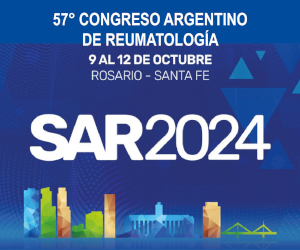Pulmonary embolism due to methacrylate after percutaneous vertebroplasty in a patient with osteomalacia
Abstract
Percutaneous vertebroplasty is an usual procedure in rheumatic diseases with minor systemic complications. We described a 62 years old female patient with diagnosis of severe osteomalacia complicated with multiple vertebral fractures, who had pulmonary embolism after percutaneous vertebroplasty with polymethylmethacrylate. The polymethylmethacrylate migration to the pulmonary circulation occurs by extravasation from the vertebral venous plexus. Chest x-ray and CT scan should be routinely used after vertebroplasty procedures in order to detect early pulmonary embolism. In case of polymethylmethacrylate pulmonary embolization, unfractionated heparin must be immediately administrated to prevent pulmonary infarction progression. Thrombus formation around the embolic material could be reduced by oral anticoagulation therapy.References
II. Francois K, Taeymans Y, Poffyn B, Van Nooten G. Successful management of a large pulmonary cement embolus after percutaneous vertebroplasty: a case report. Spine 2003; 28:E424-E425.
III. Venmans A, Klazen CA, Lohle PN, van Rooij WJ, Verhaar HJ, de Vries J, et al. Percutaneous vertebroplasty and pulmonary cement embolism: results from VERTOS II. AJNR Am J Neuroradiol. 2010; 31:1451-3.
IV. Baroud G, Crookshank M, Bohner M. High-viscosity cement significantly enhances uniformity of cement filling in vertebroplasty: an experimental model and study on cement leakage. Spine 2006; 31:2562-2568.
V. Yeom JS, Kim WJ, Choy WS, Lee CK, Chang BS, Kang JW. Leakage of cement in percutaneous transpedicular vertebroplasty for painful osteoporotic compression fractures. J Bone Joint Surg Br 2003; 85:83-89.
VI. Tozzi P, Abdelmoumene Y, Corno AF, Gersbach PA, Hoogewoud HM, Segesser LK. Management of pulmonary embolism during acrylic vertebroplasty. Ann Thorac Surg 2002; 74:1706-1708.
VII. Krueger A, Bliemel C, Zettl R, Ruchholtz S. Management of pulmonary cement embolism after percutaneous vertebroplasty and kyphoplasty: a systematic review of the literature. Eur Spine J. 2009; 18:1257-65.
VIII. Padovani B, Kasriel O, Brunner P, Peretti-Viton P. Pulmonary embolism caused by acrylic cement: a rare complication of percutaneous vertebroplasty. Am J Neuroradiol 1999; 20:375-377.
IX. Krueger A, Bliemel C, Zettl R, Ruchholtz S. Management of pulmonary cement embolism after percutaneous vertebroplasty and kyphoplasty: a systematic review of the literature. Eur Spine J 2009; 18:1257-1265.
X. Habib N, Maniatis T, Ahmed S, Kilkenny T, Alkaied H, Elsayegh D, et al. Cement pulmonary embolism after percutaneous vertebroplasty and kyphoplasty: An overview. Heart Lung. 2012; 41:509-11.
Copyright (c) 2015 Intellectual property rights: authors. Reproduction rights: Argentine Society of Rheumatology

This work is licensed under a Creative Commons Attribution-NonCommercial-NoDerivatives 4.0 International License.











